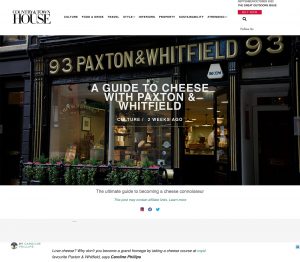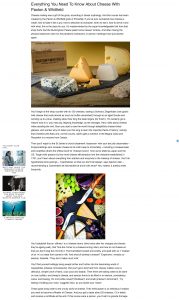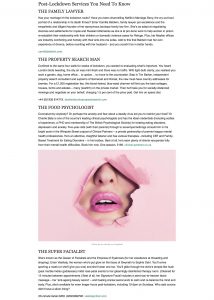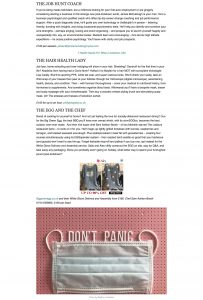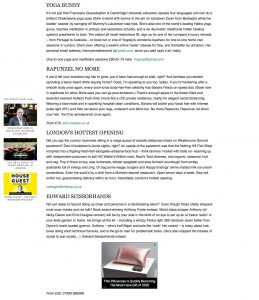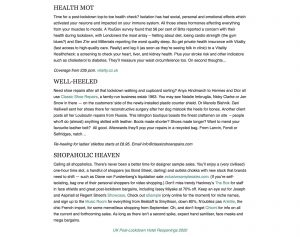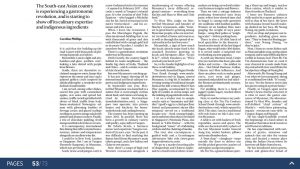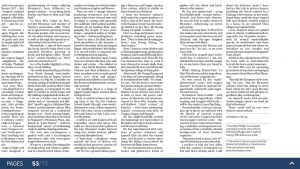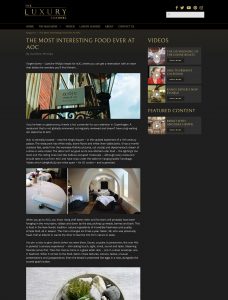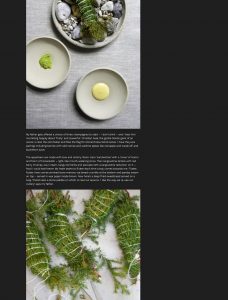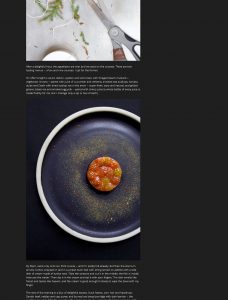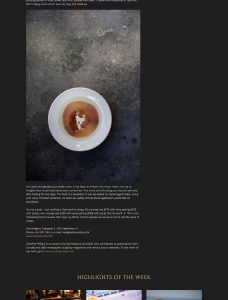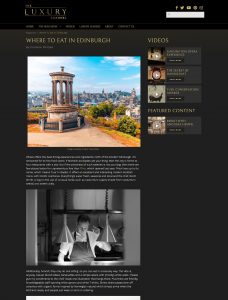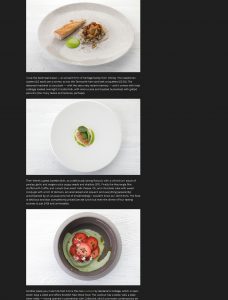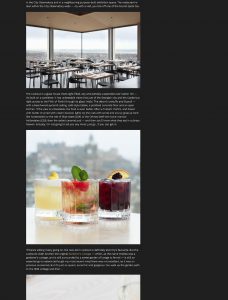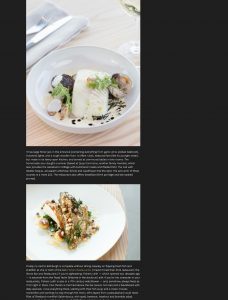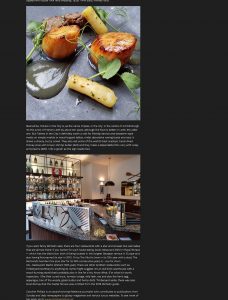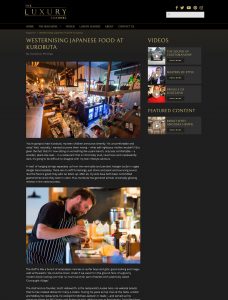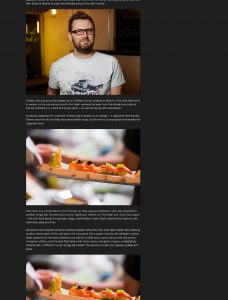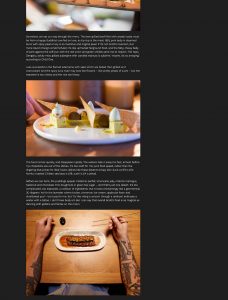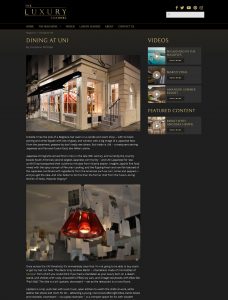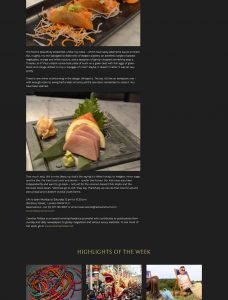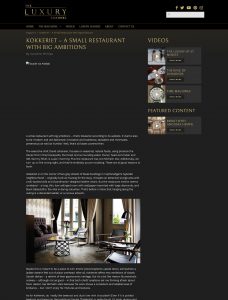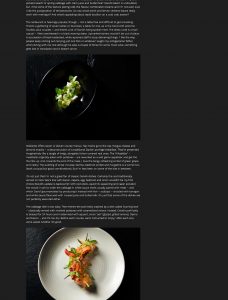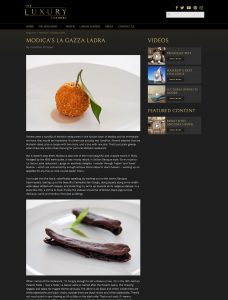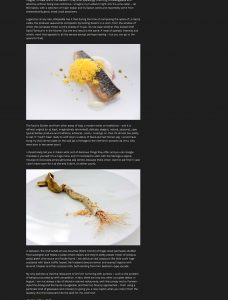I’m a big foodie. So I’m as eager as corn kernels on a hot stove to be spending a day learning to cook at the Manoir Aux Quat’Saisons. Le Manoir – for anyone who has been living in Tupperware since 1984 – is Raymond Blanc’s two Michelin starred eaterie and hotel in Oxfordshire. RB (as he’s known locally) is, of course, the author, TV personality and chef.
I’m a big foodie. So I’m as eager as corn kernels on a hot stove to be spending a day learning to cook at the Manoir Aux Quat’Saisons. Le Manoir – for anyone who has been living in Tupperware since 1984 – is Raymond Blanc’s two Michelin starred eaterie and hotel in Oxfordshire. RB (as he’s known locally) is, of course, the author, TV personality and chef.
Le Manoir is in a lovely Cotswold stone mansion – 15th century with later additions- set in the pretty village of Great Milton. Its 32 rooms and suites were created by interior designer Emily no-swags-or-chintzes-Todhunter alongside RB, the self-confessed ‘micro-idiot’ who is involved in every aspect of Le Manoir. There’s a lace-inspired suite with Chinese red colours and carved furnishings; and Blanc de Blanc, which is white-on-white and draws on Versailles.
But forget that for now becauseLe Manoir could be called a garden with a hotel attached. Think horticultural splendours maintained by an army of perfectionist gardeners overseen by a Frenchman with Aesthetic Compulsive Disorder. There are orchards, a Japanese tea garden with a stepping stone path and Oriental tea house, and lawns dotted with bronze sculptures many of which are of R.B’s friends. (Yes, yes, I know most of us settle for photo albums…)
As is the way here, soon it’s time to eat and we have dinner in the conservatory dining room overlooking the gardens. If you’re feeling particularly porky, you can have the ten course Menu Decouverte. A snip at £125, it includes a variety of seasonal delicacies including crab, asparagus, two puddings, petits fours and, presumably, un brancadier – that’s a stretcher-bearer, darling – to carry you to your room afterwards.
There are a lot of people here on An Occasion and an irritating amount of camera activity: think beaming snaps with the waiters across the chocolat fondant. We settle for three courses which are all utterly delicious: garden asparagus with gull’s egg and organic Scottish salmon confit and Cornish lobster and turbot, followed by a cheese trolley groaning under every fromage known to mankind. The service is impeccable: super-attentive, friendly and not obsequious.
Afterwards we repair to Lemongrass, our Orientally-inspired suite with grassy textures, dark woods, tank of tropical fish, and bed on a raised level framed by draped green curtains. It also has a steam room big enough to seat eight people but we settle for two. We sleep very soundly. But fortunately it’s soon time to eat again. This time, the best breakfast I’ve ever had in a hotel – primarily for the quality of ingredients, frompata negra ham to home-made muesli, nuts and berries. (It’s a buffet which, RB reveals later, he spent a year perfecting.)
Then it’s time to hit The Raymond Blanc Cookery School – just a few steps from the manor house – for a 9am start. It opened in 1991 and they now hold courses of one to four days – everything from children’s culinary lessons to Christmas Dinner Party, Bread Making to Fish and Seafood courses. The teaching kitchen – adjacent to those of the restaurant – is a homely Smallbone affair with Gaggenau appliances.
Today we’re doing The Summer Dinner Party, learning in one day how to create a three-course meal using fresh, seasonal produce. There are ten of us, including four chaps – most here on birthday presents. We don white chef’s jackets and grey aprons. (I’m sent to change from sandals because of ‘elf ‘n’ safety. Enclosed toes only for the kitchen). We’re given advice about hand-washing, knives and suchlike, then we’re under starters orders.
Chef Joel Moroney – an engaging, energetic and humorous tutor – takes the class with tutor Steve Lyons. We work in couples and learn eight dishes, including tomato essence risotto, pan-fried sea bream and poached peaches with orangesabayon. (My husband has left, so I’m paired with Carol, a radiographer and mother of six.)
Each recipe has a difficulty rating. Vanilla syrup gets one blob. (Which means it’s easy peasy and takes five minutes standing on your head.) Tomato essence risottowith summer vegetables – two blobs. (Which means it takes 45 minutes and can probably only be cooked if you concentrate hard.)
Each dish is also selected to demonstrate a technique – from glazing to blanching and sponge making. Preparing the slow roast shoulder of lamb helps us with our dry marinating technique; and making the roast red pepper and couscous hones our baking and steaming skills.
There are lots of tips on ingredients. (Things like where to get micro-herbs and organic Welsh lamb.) Tips on cookery skills. (‘The roasting and caramelising of the lamb bones will make a delicious jus.’) Techniques. (‘Roll the stuffed peppers away from you like sushi.’) There’s also lots of scientific information. Tips on equipment. And nutritional tips. If that makes it sound serious, the tone of the course is actually fun.
There’s some hands-on, some demo: perfect amounts of each. I ask everything I ever wanted to know, from de-boning poultry to sharpening knives and how to preserve Moroccan lemons. Plus there’s lots of tasting, each time with a new plastic spoon. ‘One student, er, cooked with his until it melted,’ warns Joel dolefully. Then we have a relaxed lunch in the kitchen, eating what we’ve made: pistou soup, pan-fried sea bream quick-cooked ratatouille, tomato essence risotto and pudding, if you have space.
After lunch, we’re shown around the manicured gardens. The beginnings of a wild mushroom valley – currently a ditch of wood-chippings and don’t-wanna-spore spores, and a watercress ditch. An organic kitchen garden with 70 herbs – including comfrey, sweet cicely and lovage. One with edible woodland flowers. A poly tunnel housing lemon grass and exotic peppers. And a micro-herb garden with red giant mustard, purple sprouting broccoli, tiny sorrel and weeny celery leaves, for decoration and flavouring. Very du jardin a l’assiette.
The day is terribly civilised – with teas, coffees and dainty biscuits at 10.30am; ‘Kitchen Angels’ to wash up; three-course lunch; then tea at 4.30pm. Before leaving, we’re guided round the engine room: the three catering kitchens. We walk past blast chillers, chefs making desserts as Art and award-winning sugar sculptures. Going home pressies are good too. A pan – Raymond Blanc by Anolon – so good I’ve since bought the Company, (well, the set, plus some fantastic and stylish Raymond Blanc Anolon knives.) And a comprehensive recipe file, chef’s whites, framed certificate and our Fraisier cake – a complicated affair that I have no intention of recreating.
The course is worthy of 15 stars. It’s comparatively expensive, but offers value for money. I’ve learned new techniques for doing a three-course dinner while remaining as relaxed as if I were doing boil-in-the-bag. And I’ve since cooked a decent pistou soup and roast red pepper with couscous at home. Just one word of caution. Don’t weigh yourself before and after…






